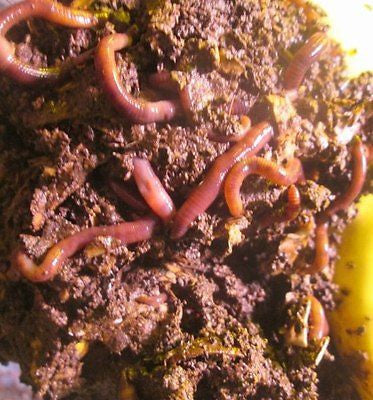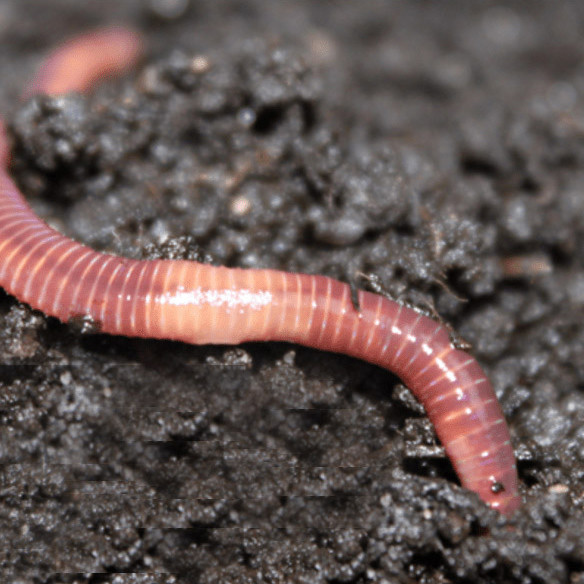Strong red worms: Transform organic waste
Strong red worms: Transform organic waste
Blog Article
The Role of Red Wigglers in Lasting Horticulture
The combination of red wigglers into lasting horticulture practices offers an engaging approach to enhancing dirt health and wellness and decreasing organic waste. The implications of making use of red wigglers prolong beyond plain composting; their function in forming an extra sustainable future warrants a much deeper exploration of their advantages and functional applications.
Understanding Red Wigglers
Red wigglers, scientifically referred to as Eisenia fetida, are a types of earthworm renowned for their duty in lasting gardening and composting techniques - red wigglers. These worms flourish in decaying raw material, making them especially effective in transforming kitchen area scraps and yard waste right into nutrient-rich garden compost. Unlike standard earthworms, red wigglers have a higher tolerance for varying wetness levels and can thrive in settings with abundant natural material
(eisenia fetida worms for sale)Characteristically, red wigglers are smaller than their earthworm counterparts, usually measuring in between 3 to 4 inches in size. They have a reddish-brown coloration and have a segmented body structure that aids in their burrowing and feeding tasks. These microorganisms are hermaphroditic, suggesting each specific has both male and women reproductive body organs, which enables efficient population development under optimum problems.
The environment choices of red wigglers consist of damp, dark environments rich in natural web content, such as compost bins or worm ranches. Their eco-friendly function extends beyond composting; they are integral in freshening the dirt and assisting in nutrition biking, which eventually adds to healthier garden ecosystems. red wigglers. Understanding the biology and behavior of red wigglers is important for those seeking to apply reliable vermicomposting in lasting gardening
Advantages of Vermicomposting
Vermicomposting deals various benefits that boost sustainable horticulture practices and contribute to ecological health and wellness. Among the main benefits is the transformation of natural waste into nutrient-rich garden compost, which improves dirt structure and fertility. The spreadings produced by red wigglers are loaded with useful bacteria and important nutrients, making them an excellent natural plant food.
Additionally, vermicomposting significantly lowers landfill waste. By drawing away cooking area scraps and lawn waste from land fills, this method not just reduces methane discharges-- a potent greenhouse gas-- yet additionally promotes a round economic climate, where waste is repurposed as a resource.
Another advantage is the improvement of soil oygenation and drain (red wigglers). The burrowing activity of red wigglers produces channels in the soil, enabling air and water to penetrate even more conveniently, hence fostering a healthier root system for plants
Additionally, vermicomposting can be done on a little range, making it obtainable for city garden enthusiasts and those with minimal room. This approach urges ecological stewardship and recognition, as people come to be a lot more involved with their waste administration practices. Eventually, vermicomposting stands for a sustainable, efficient, and environment-friendly technique to gardening that benefits both plants and the planet.
How to Beginning Vermicomposting
Beginning your own vermicomposting system can be a satisfying venture that enhances your sustainable horticulture methods. To begin, select an appropriate container, such as a plastic container or wood box, with good drainage and air flow. The size will rely on the volume of kitchen scraps you create; a container of 10-14 gallons normally is enough for a household.
Following, prepare the bed linen material. Shredded paper, cardboard, and coconut coir are outstanding options, giving a comfy habitat for the red wigglers. Go for a bed linen deepness of regarding 4-6 inches, which should be damp but not soaked.
Once the bed linens is established, present your worms. Red wigglers (Eisenia fetida) are the most ideal for composting. Begin with approximately one extra pound of worms for every 2-3 extra pounds of kitchen scraps weekly.
Begin including kitchen waste, staying clear of meat, dairy products, and oily foods, as these can bring in bugs and produce smells. Consistently keep track of the container's wetness degrees and temperature, guaranteeing it stays within the optimal range for worm activity. With these preliminary steps, you'll be well on your means to creating nutrient-rich compost for your yard.
Maintaining a Healthy And Balanced Worm Bin
A prospering worm bin needs consistent treatment and interest to keep an ideal setting for the red wigglers. Secret factors to monitor consist of wetness levels, temperature level, and food supply. Maintaining a wetness level comparable to a wrung-out sponge is important; too much water can bring about anaerobic problems, while insufficient can dry out the worms.
Temperature is additionally vital, as red wigglers thrive in a variety of 55 to 77 degrees Fahrenheit. Severe temperatures can worry the worms, possibly bring about death. Consequently, positioning the bin in a climate-controlled location or making use of shielding products can aid control temperature changes.

Lastly, oygenation is vital. Consistently turning the bed linens and using a fork or shovel can stop compaction and advertise airflow, making certain a healthy, successful setting for the red wigglers. By adhering to these methods, garden enthusiasts can maintain an efficient worm container that sustains sustainable horticulture initiatives.
Influence On Soil Wellness
Enhancing soil health and wellness via the use of red wigglers is an essential facet of sustainable gardening. These worms, understood scientifically as Eisenia fetida, play a vital duty in improving soil structure and fertility. By taking in raw material, red wigglers break down complex materials right into simpler compounds, a process called vermicomposting. The end product, worm castings, is abundant in necessary nutrients, including nitrogen, phosphorus, and potassium, which are important for plant growth.

(Lake Rhodhiss Bait)Studies have actually shown that soils improved with worm castings show raised microbial activity and boosted fertility, causing higher plant yields. By incorporating red wigglers right into gardening methods, gardeners not just enrich their dirt but also add to a more lasting agricultural system, stressing the interconnectedness of soil wellness and environmental stewardship.

Final Thought
Finally, red wigglers significantly add to sustainable gardening via their effective vermicomposting methods. Their capability to transform natural waste into nutrient-rich compost enhances soil fertility and supports a varied microbial ecosystem. Their burrowing activity improves dirt oygenation and water retention, profiting plant wellness. By advertising waste decrease and promoting a circular economic climate, red wigglers become vital elements in environment-friendly horticulture efforts, highlighting their important role in environmental sustainability.
Report this page